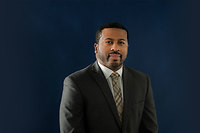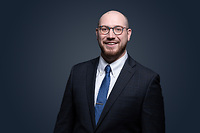On December 13, 2024, the Ohio First Appellate District Court of Appeals issued a decision that reinforces the validity and applicability of waiver of subrogation provisions contained in AIA design-build contracts, as applied to those subcontractors and subconsultants who served on the underlying design-build project but were not parties to these primary agreements between the owner and contractor. Hartford Fire Ins. Co. v. DeBra-Kuempel, Inc., 1st Dist. Hamilton No. C-240100, 2024-Ohio-5830, ¶ 41. The decision not only clarifies a prior court split in interpretation of AIA contracts under Ohio law but also weighs in on the issue of contractual waiver disputed under multiple insurance policy coverages, as a matter of first impression.
This appeal arose out of a subrogation action initiated in the Hamilton County Court of Common Pleas by a commercial property owner’s insurer, as the subrogee-plaintiff, based on allegations that the design of its insured’s HVAC system was negligently engineered, which resulted in a water loss amounting to approximately $2,000,000 in property damages. Interestingly, the plaintiff did not sue the design-build project’s Engineer of Record. Instead, the plaintiff only named a design-assist engineer who had been hired on by the general contractor later in the project schedule for the purposes of implementing the Engineer of Record’s design of the HVAC system. This is despite the fact that Ohio law clearly holds that it is the designer of record who owes a duty of care as to record design plans. Cincinnati Riverfront Coliseum, Inc. v. McNulty, Co., 28 Ohio St.3d 333, 337, 504 N.E.2d 415, 419 (1986).
Nonetheless, it was later discovered during litigation that plaintiff’s insured had mutually agreed to waive a right to subrogation with the contractor, Architect of Record, and Engineer of Record, upon execution of the AIA contracts for the design-build project. However, upon a closer reading of these provisions, the contractual language also encompassed an extension of the waiver of subrogation to any and all subcontractors, subconsultants, agents or representatives that served to assist the contracting parties on the design-build project. As a result, the trial court enforced the waiver on behalf of the named engineer defendant and against the subrogee-plaintiff, dismissing the case.
On appeal, the insurer argued that the three (3) waiver of subrogation provisions contained in the AIA contractual documents were competing and ambiguous as to the intent, scope, or enforceability of a waiver as between its insured owner and the named defendant, an engineer subcontractor. Those three provisions are as follows:
Section 8.1.2 of the B101 (“Section 8.1.2”) provides:
To the extent damages are covered by property insurance, the Owner and Architect waive all rights against each other and against the contractors, consultants, agents, and employees of the other for damages, except such rights as they may have to the proceeds of such insurance as set forth in AIA Document A201-2017, General Conditions of the Contract for Construction.
Section 11.3.1 of the A201 (“Section 11.3.1”) provides:
The Owner and Contractor waive all rights against (1) each other and any of their subcontractors, sub-subcontractors, agents, and employees, each of the other; (2) the Architect and Architect's consultants; and (3) Separate Contractors, if any, and any of their subcontractors, sub-subcontractors, agents, and employees, for damages caused by fire, or other causes of loss, to the extent those losses are covered by property insurance required by the Agreement or other property insurance applicable to the Project, except such rights as they have to proceeds of such insurance. However, the scope of this waiver shall be limited to damages to the Work itself, and this waiver shall not apply to property insurance purchased by the Owner after completion of the Work or final payment, whichever comes first.
Section 11.3.2 of the A201 (“Section 11.3.2”) provides:
If during the Project construction period the Owner insures properties, real or personal or both, at or adjacent to the site by property insurance under policies separate from those insuring the Project, or if after final payment property insurance is to be provided on the completed Project through a policy or policies other than those insuring the Project during the construction period, to the extent permissible by such policies, the Owner waives all rights in accordance with the terms of Section 11.3.1 for damages caused by fire or other causes of loss covered by this separate property insurance.
In affirming the trial court’s decision, the First District Appellate panel held that the plain language of Section 11.3.1 established that the contracting parties mutually agreed to waive subrogation as to each other but also as to any of their subcontractors, subconsultants, agents or representatives. In doing so, the First District further clarified an existing split in the courts over the issue of whether the scope of waiver, as reflected in Section 11.3.1, extends to bar subrogation for all incurred property damages claimed under the insured’s policy or otherwise limited to only those property damages incurred “to the Work itself.” See Westfield Ins. Group v. Affinia Dev., LLC, 2012-Ohio-5348, ¶ 35-41 (5th Dist.) (discussing the split approached). As the panel reasoned, the language contained in Section 11.3.1 is unambiguous and wholly demonstrates the parties intent to waive subrogation as to any and all property damages incurred during the loss and covered by and/or paid out under the insured’ policy
In addition, the First District’s decision also briefly explained why the insurer was misguided in arguing that the separate waiver of subrogation provision under Section 11.3.2 was a competing or superseding contractual term that afforded them the right to subrogation under the correct policy coverage, since there were multiple policies associated with the design-build project or property. The language of Section 11.3.2 had only been interpreted by an out-of-state court one time in the past, albeit in dicta. Nonetheless, the panel took the opportunity to address this issue as a matter of first impression in Ohio, wherein it laid out the proof that a party must present in order to successfully argue that the language of Section 11.3.2 would supersede all other waiver of subrogation provisions that are similar to the enforceable provision under Section 11.3.1. This proof includes a showing that the alleged competing provision under Section 11.3.2 related to a separate policy insuring the damaged property and that the insurer had paid its insured proceeds from this separate policy. However, the insurer was incapable of providing this proof in the trial court or on appeal.
This notable decision may serve to resolve both contractual as well as tort disputes arising out of Ohio’s commercial construction projects. If you have any questions with respect to this decision or matters of construction liability, please contact an attorney from our Architects and Engineers/Construction Liability Practice Group.
Attorneys
- Cincinnati
- Cincinnati
- Cleveland
- Sandusky
- Louisville
- Indianapolis
- Dayton
- Indianapolis








